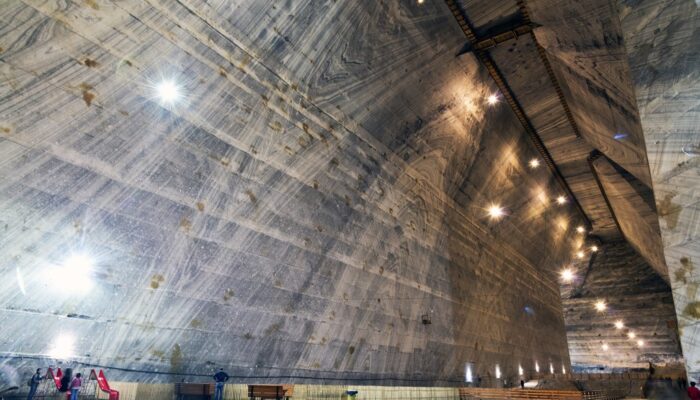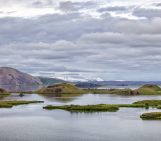
The image gives us a glimpse into the Slănic Salt Mine in central Romania, about 100 kilometres north of the capital city Bucharest. The region was actively mined for almost 30 years, from 1943 to 1970.
The Slănic Salt Mine is the largest salt mine in Europe, and the facility consists of 14 large chambers, each more than 50 metres high. The cavities of the mine, more than 200 metres deep, carve into the Southern Carpathian Mountains, offering a unique large-scale view into how the layers of rock beneath the Earth’s surface bend and fold. The structures featured in this image were stretched out over time as the Earth’s tectonic plates shifted, highlighting just how fluid our planet can be.
Compared to other rocks, the rock salts in this mine can change form and flow without much pressure and at relatively shallow depths. “This flow is however very slow, so that man-made cavities in salt mines deform very slowly and remain open for decades,” notes Janos Urai, a professor of structural geology, tectonics and geomechanics at RWTH Aachen University in Germany who snapped this image while visiting the mine in 2017. “We study this slow flow of salt in nature, to be able to improve predictions of the long-term evolution of nuclear waste repositories and abandoned salt caverns.”
The mine is no longer used for resource extraction, but is now an active tourist destination (there are even playgrounds, pool tables and other recreational features).
By Olivia Trani, EGU Communications Officer
You can learn more about salt tectonics on the Tectonics and Structural Geology blog here: Minds over Methods: Reconstruction of salt tectonic features
Imaggeo is the EGU’s online open access geosciences image repository. All geoscientists (and others) can submit their photographs and videos to this repository and, since it is open access, these images can be used for free by scientists for their presentations or publications, by educators and the general public, and some images can even be used freely for commercial purposes. Photographers also retain full rights of use, as Imaggeo images are licensed and distributed by the EGU under a Creative Commons licence. Submit your photos at http://imaggeo.egu.eu/upload/.




